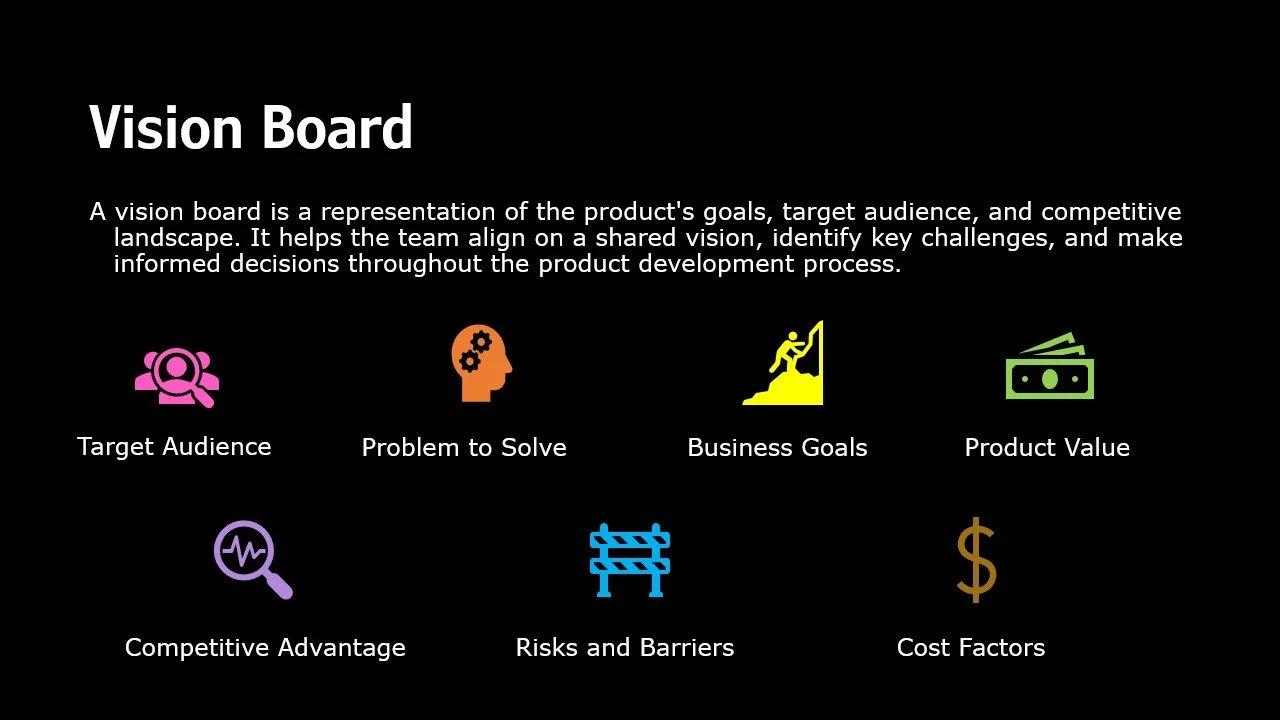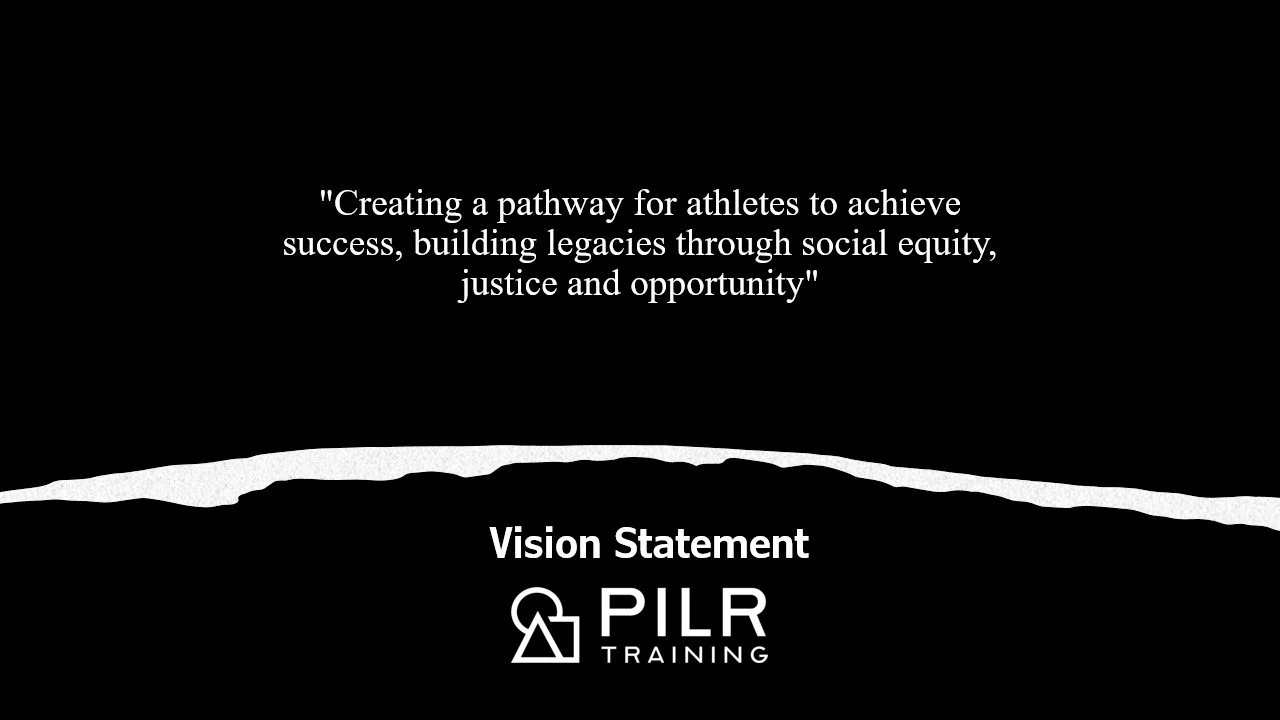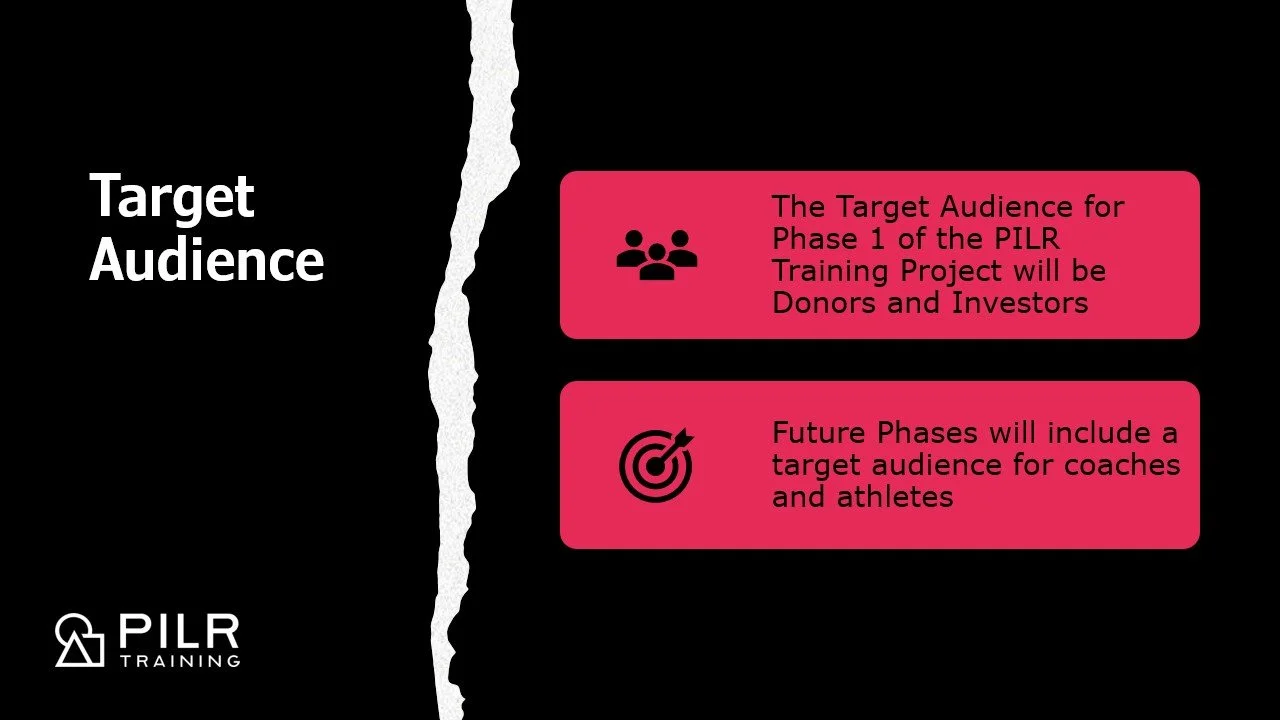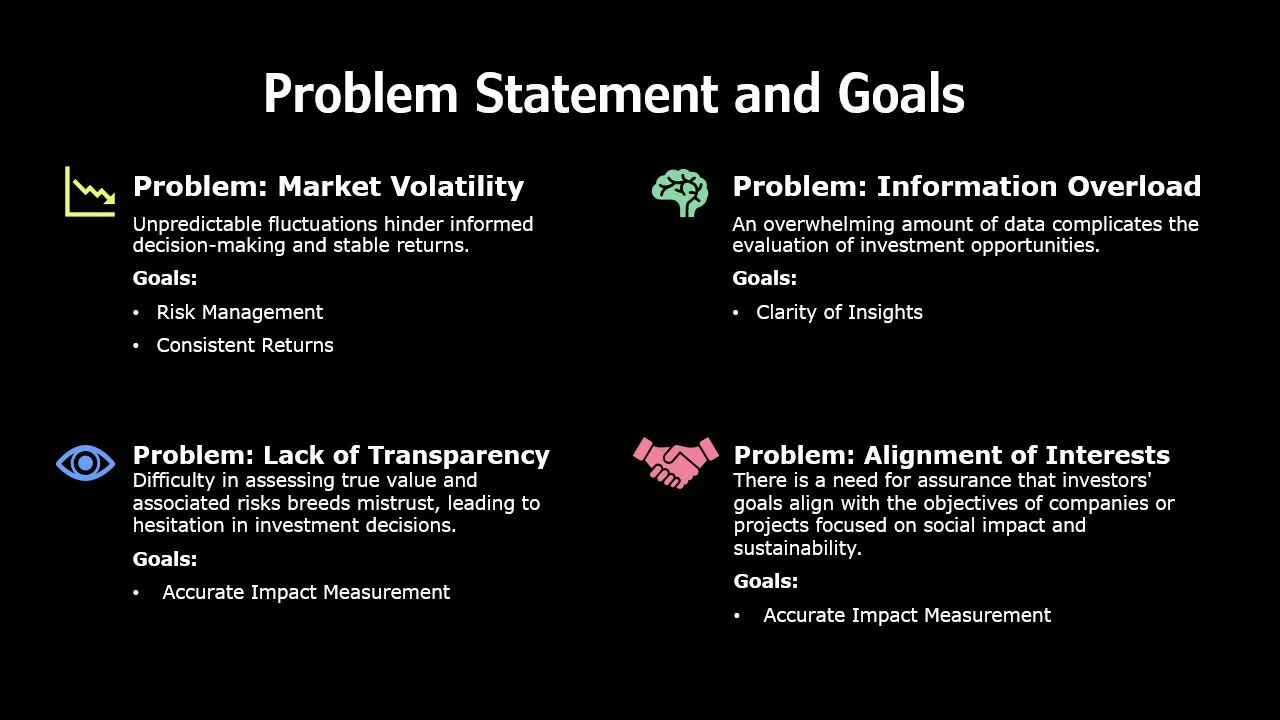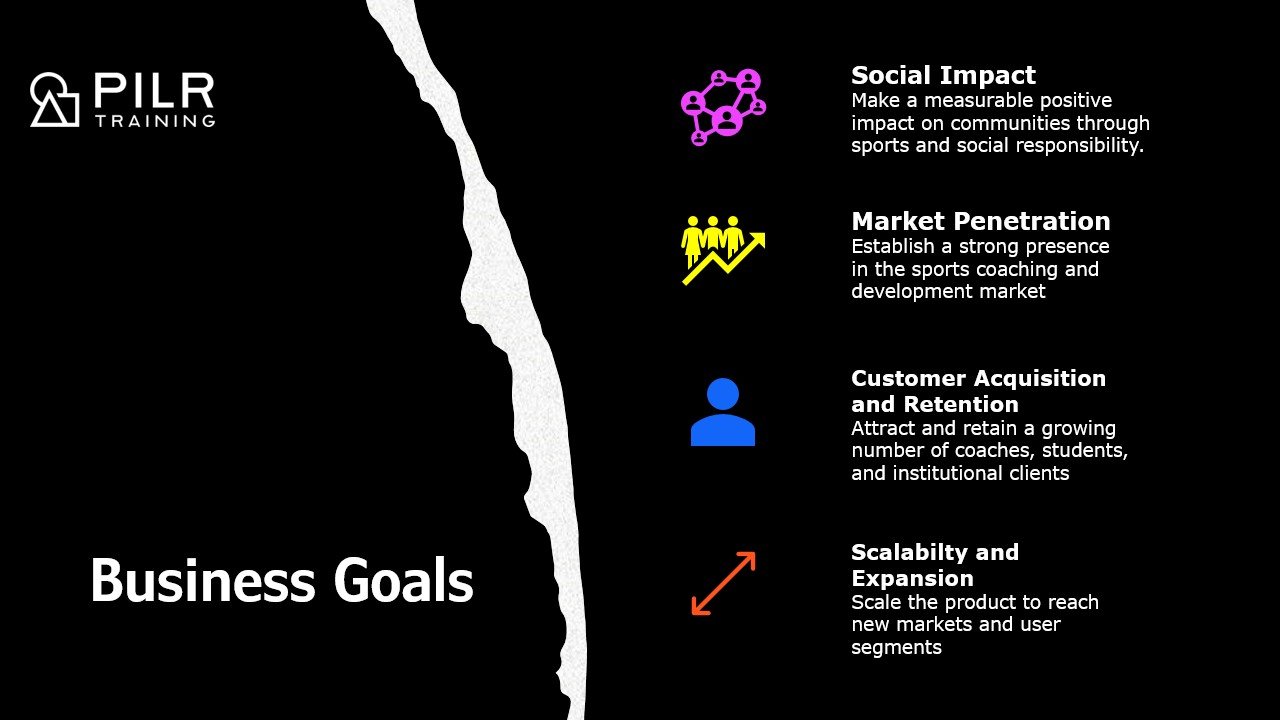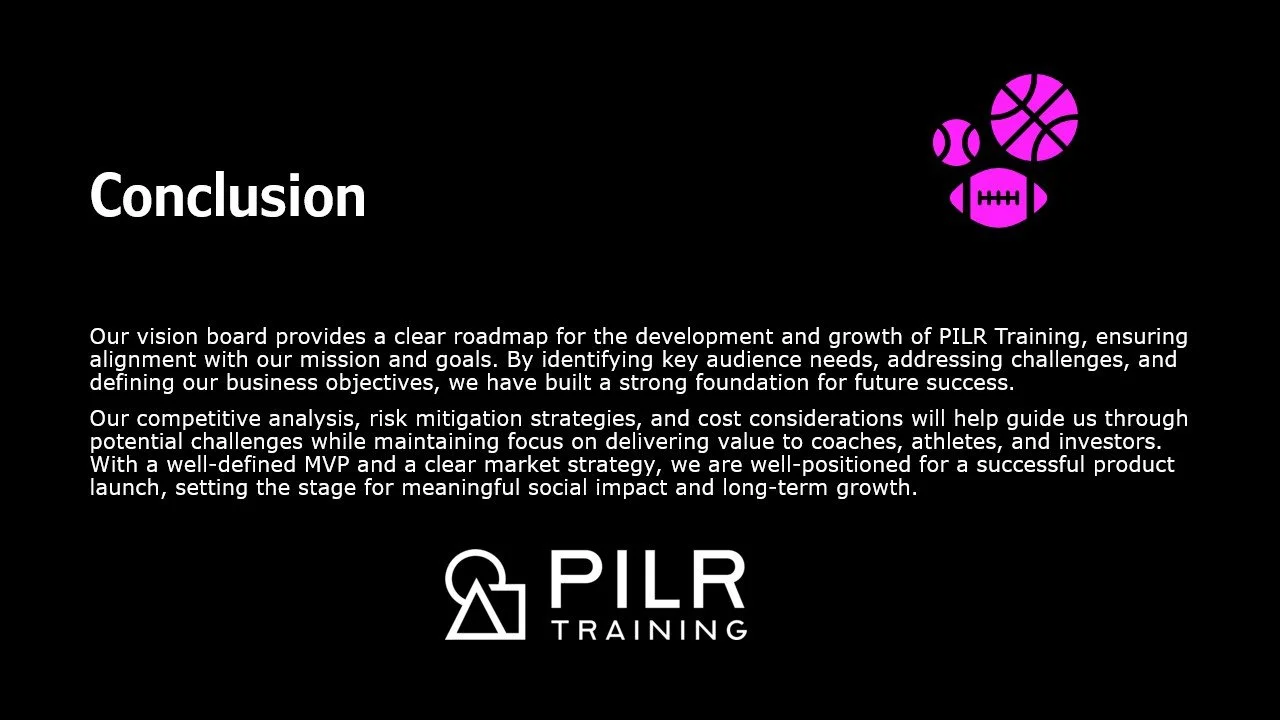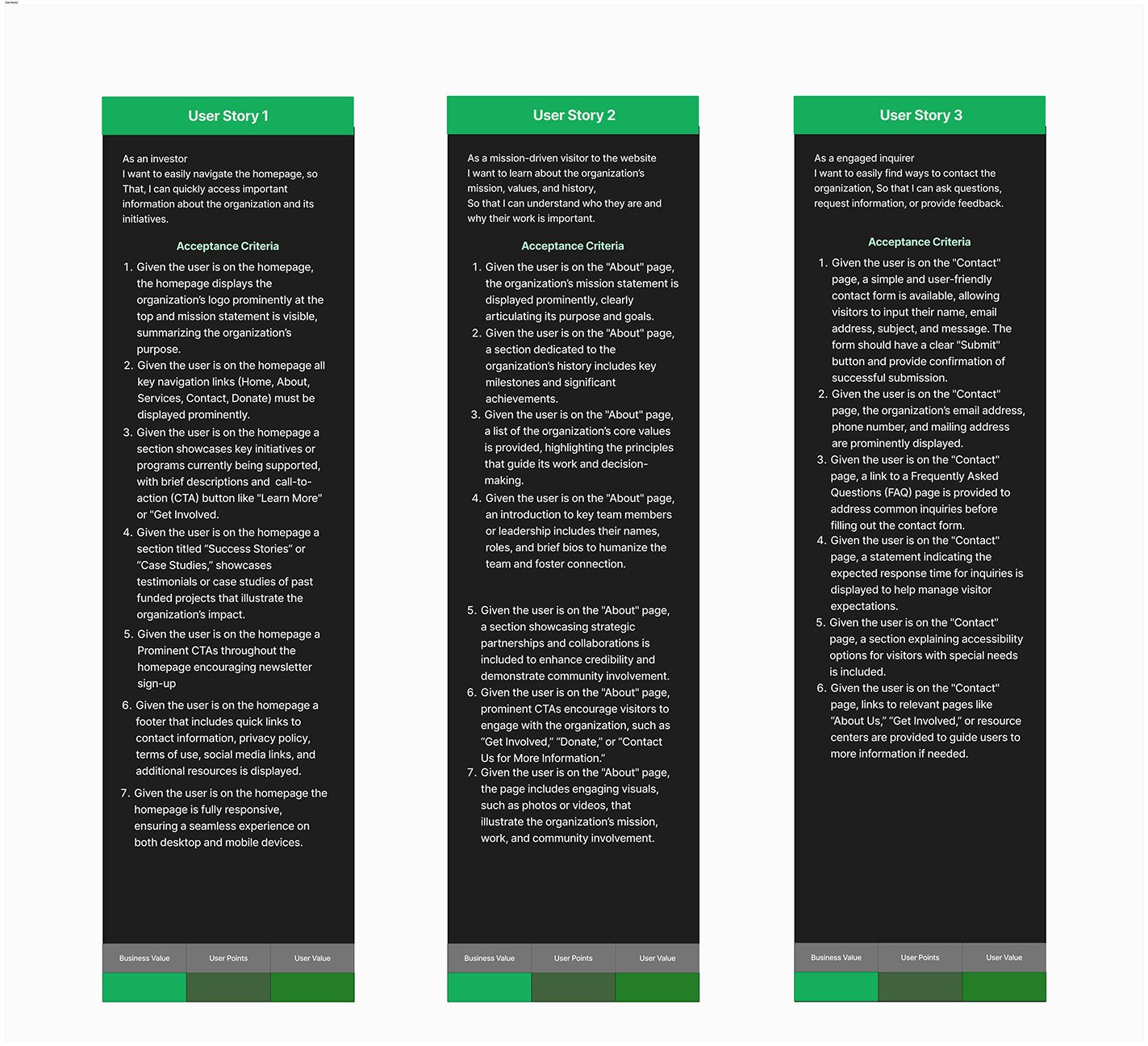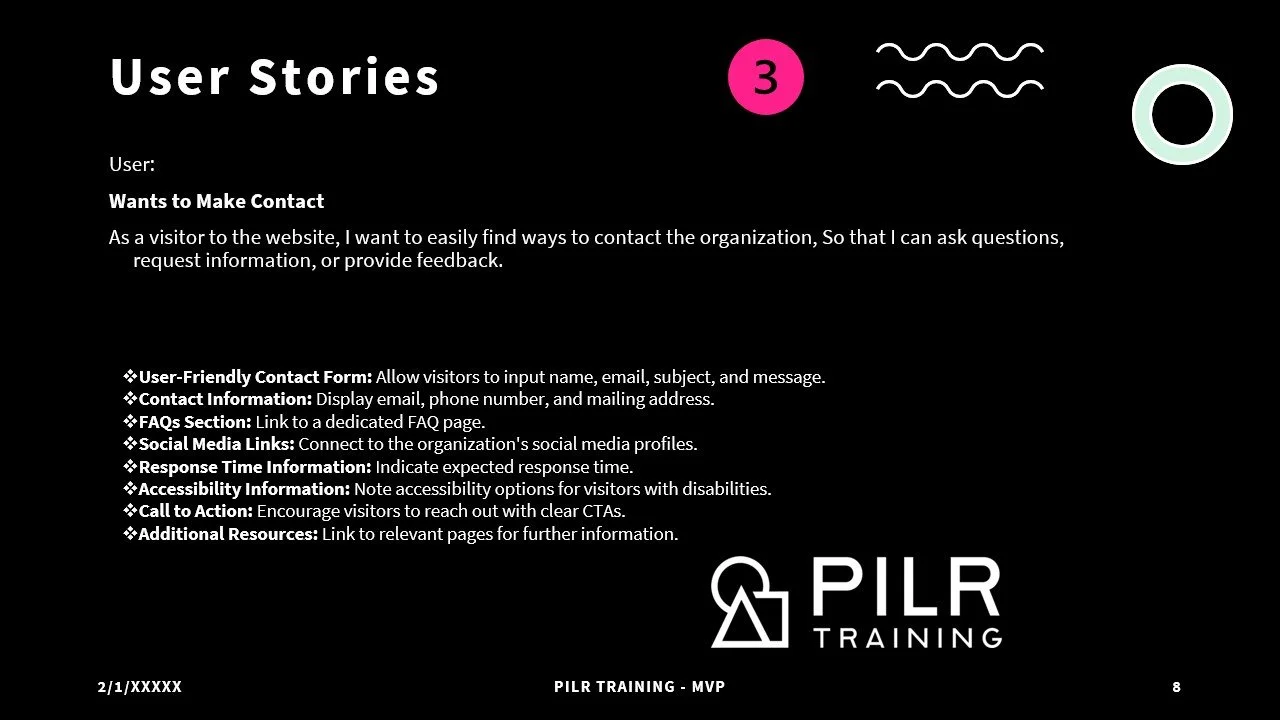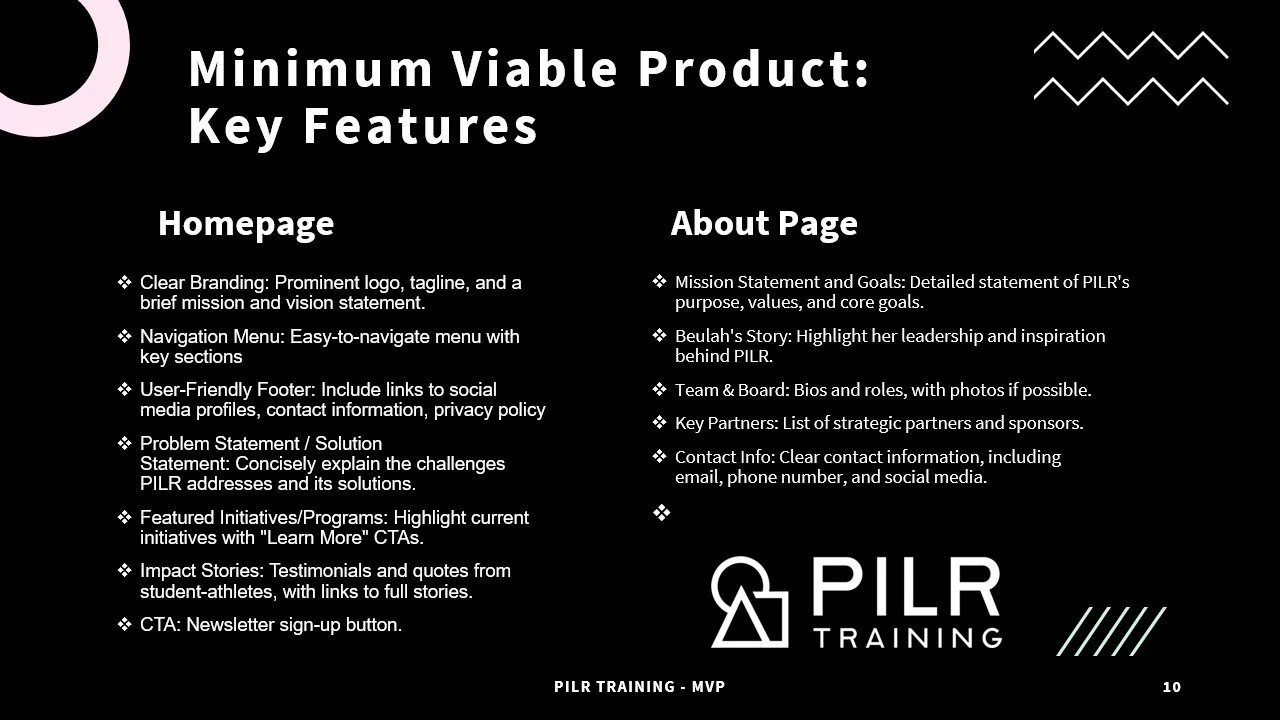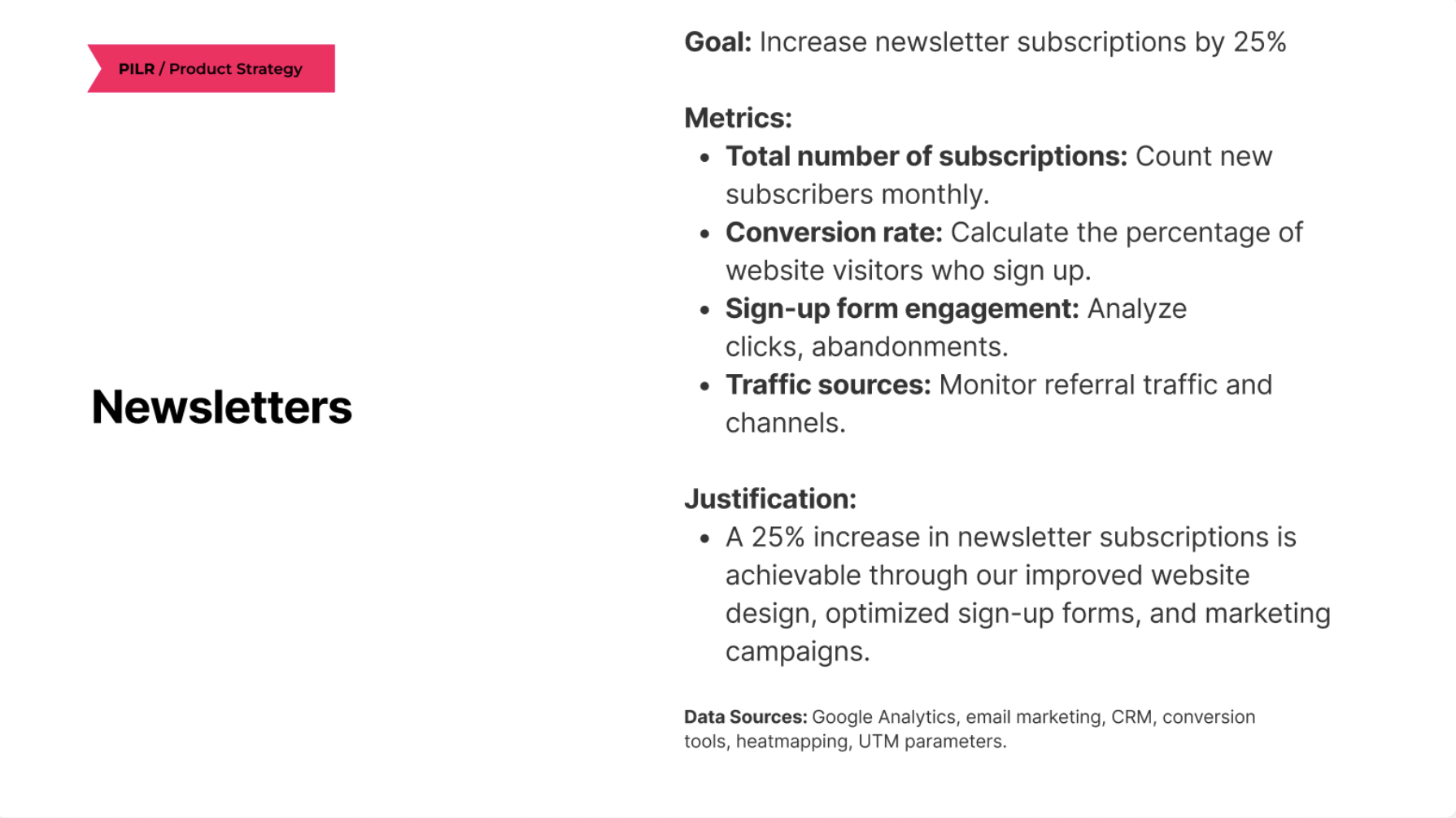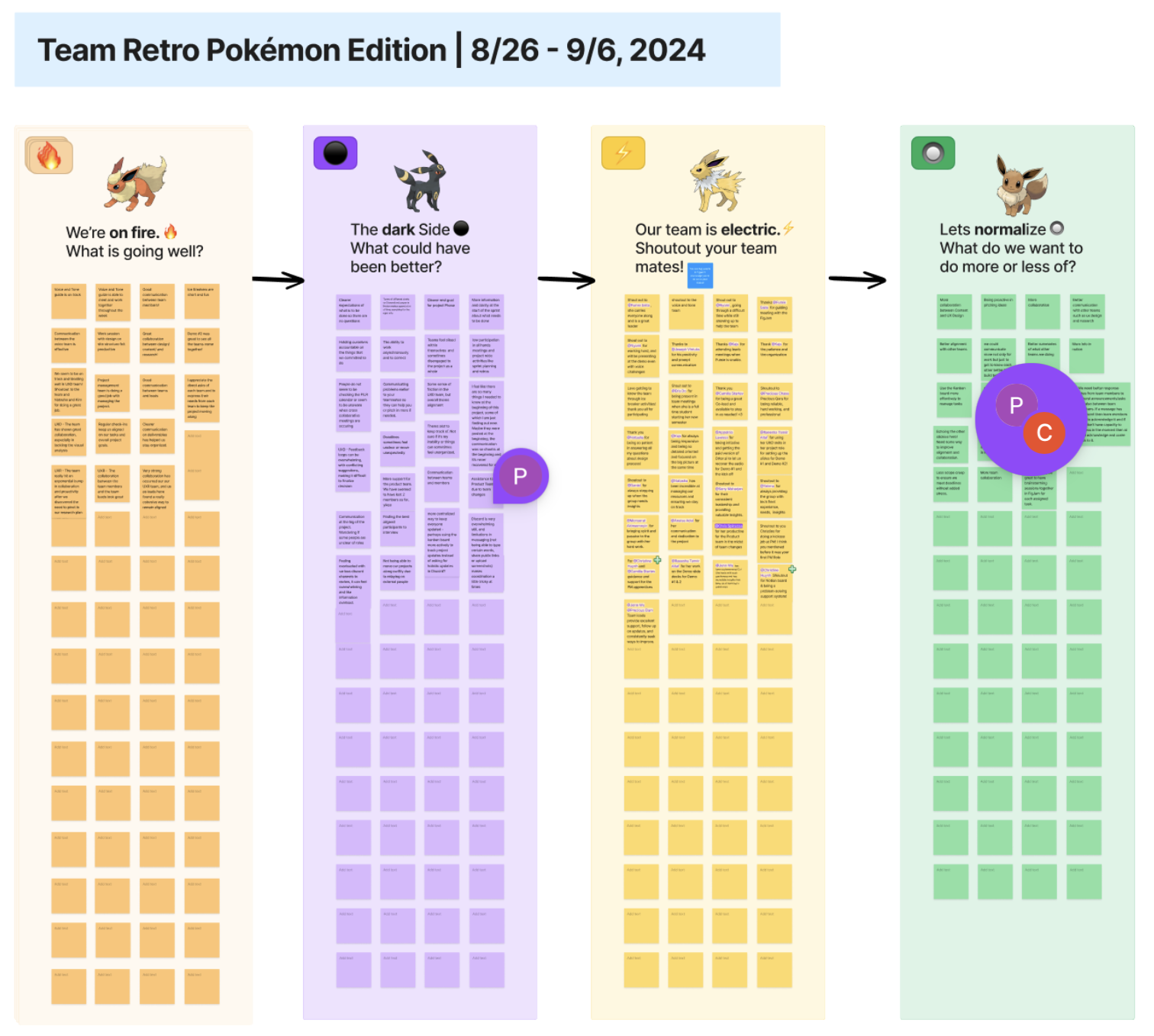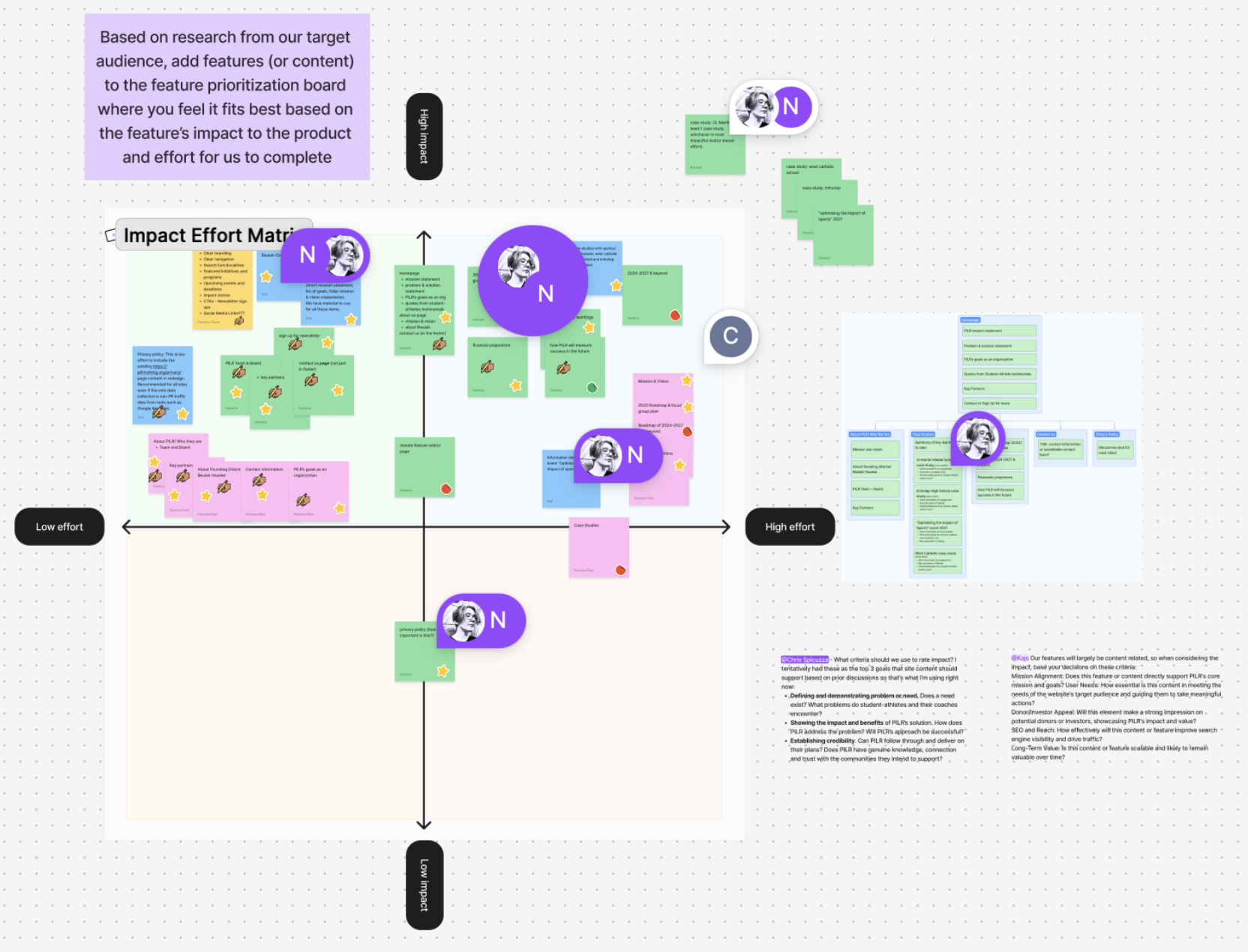PILR
TRAINING
PROJECT
Too Long, Didn’t Read
The PILR Training project was a test of both leadership and product design strategy. While the existing website provided a starting point, it lacked essential features, requiring us to build from the ground up. Our team defined the project vision and roadmap while awaiting critical research from cross-functional teams. Once we had the data, we crafted user stories, which shaped the Minimum Viable Product (MVP) and guided key design decisions. We also established Key Performance Indicators (KPIs) to measure success, advising both the project team and stakeholders. More than anything, this project strengthened my confidence as both a designer and leader, as we navigated setbacks, adapted to challenges, and delivered a comprehensive Phase 2 handoff ready for execution.
Impact:
Defined the project vision and roadmap
Established user stories and shaped the MVP
Set measurable KPIs to track success
Led collaboration across teams
Delivered a structured, actionable Phase 2 handoff
About the Project
Project Type:
Website Redesign
My role:
Product Strategy Lead
My Team:
Our product ownership and strategy team includes myself as Product Lead and two to three apprentices. Our product team is part of a larger cross-functional team of UX Design, UX Research, and UX Writing.
Project Background
PILR Training supports under-resourced student-athletes in Philadelphia by empowering coaches through connection, resource-sharing, and ongoing education. By promoting community safety, cultural competency, and holistic support through sports, PILR addresses systemic issues like food insecurity, gun violence, and unprocessed trauma. The goal is to enhance young athletes' participation and development by leveraging coaches as vital community resources.
Project Purpose and Goals
The purpose of our project is to revamp the PILR website to attract investors and serve as a vital resource for future coaches in Philadelphia. Our goals are to create a dynamic, user-intuitive website with compelling information for investors and coaches. The design will be clean, featuring black, white, and pink aesthetics, with timeless and dynamic content complemented by impactful photos. In Phase 1, our focus is to engage donors, encouraging them to support PILR. Ultimately, we aim to communicate the essence of PILR Training effectively, making it easy for visitors to understand and engage with our mission.
Product Strategy Team Goals
In Phase 1 of the PILR Training project, the product strategy team set out to align the team with the vision board and establish a clear product roadmap for guidance. By analyzing user interviews and understanding the target audience's needs, we developed comprehensive user stories that outlined the essential features for the MVP. We established a series of detailed KPIs to measure the product's success and guide future development. These KPIs included metrics related to user engagement, content consumption, and overall platform adoption.

Assemble the Team
Building the right team was both challenging and rewarding. I immersed myself in the process, carefully reviewing a wide range of applications, looking beyond qualifications to gauge each candidate’s passion and problem-solving abilities. The interview process was deliberately structured to uncover more than just experience — I wanted to find people who aligned with the vision and had the drive to make it a reality. After many interviews and in-depth discussions with a peer, I assembled a team that felt like the right fit. Surprisingly, our top candidate didn't have the most experience on paper, but their potential and genuine enthusiasm set them apart. It was a clear reminder that passion and dedication often matter more than traditional qualifications.
A resume does not tell the entire story
Vision Board
Product Roadmap
In Phase 1 of the PILR Training project, the product strategy team prioritized aligning cross-platform goals and defining the essential tasks for maximum efficiency. To achieve this, we created a detailed product roadmap that mapped out the steps required for all teams, including Research, Design, Content, and Project Management. By providing clear guidance and expectations for each team, we ensured that our efforts were aligned and focused on achieving our objectives.

User Stories
User stories are a key tool in translating user research into actionable product features. They help us understand what our users need and why they need it, guiding the design and development process. For PILR Training, the product strategy team crafted a range of in-depth user stories based on our research findings. From there, we distilled these down to the top three that offered the most valuable insights, ensuring that our product features would address the core needs of our target audience. These focused user stories became the backbone of our MVP, shaping a product that truly resonates with users.
Minimum Viable Product
(MVP)
To identify what should be included in the MVP, we relied heavily on user research. Through surveys and interviews, we gathered insights that helped us define a detailed user persona. This persona gave us a clear understanding of who we were building for and what their priorities were. With that knowledge, we crafted user stories that represented the key interactions and experiences our target users would need. These user stories then served as a blueprint, guiding us in determining the essential features that would shape the MVP.
By focusing on the MVP, we ensured that every feature was purposeful, aligning with the needs of our users and the goals of PILR Training. It allowed us to make informed, data-driven decisions, paving the way for a product that would resonate with its audience from the start.
For the product strategy team, defining the MVP (Minimum Viable Product) was the most critical aspect of Phase 1. It set the foundation for everything that followed, ensuring we had a clear, focused plan for what to build first. An MVP is essential in the early stages of a project because it allows us to launch a streamlined version of the product that meets the core needs of users, while still leaving room for future growth. It helps validate ideas, gather feedback, and refine the direction without overcommitting resources.

Key Performance Indicators
Key Performance Indicators (KPIs) are critical for assessing the success of our product as well as the success of PILR Training. Our team developed these KPIs by blending industry best practices, user research, and expert analysis, focusing on metrics like user engagement, conversion rates, and overall program impact. These indicators will provide clear insights into how well the product serves its target audience.
To track progress, establishing benchmarks is essential, and we recommended specific tools to gather and analyze the necessary data. In future iterations, the KPIs will also be used as content for the website, offering donors and investors valuable, data-driven updates on PILR's success—crucial information for building confidence and securing long-term funding and support.

The success of Phase 1 of the PILR Training project was largely due to the effective collaboration among the cross-functional teams in our Agile environment. The design team, research team, UX writing team, and project management team worked together seamlessly, with regular team meetings and open communication channels. Team leads met weekly to discuss progress, provide support, and ensure alignment with project goals.
The product team played a pivotal role in guiding the collaboration and driving progress. We worked closely with other teams on key project pieces and deliverables such as the product roadmap, competitive analysis, information architecture, prioritization matrix for the MVP, and content management. By working side by side and together in an Agile environment, we cultivated a collaborative and supportive atmosphere that ultimately led to the successful completion of Phase 1.
Cross Functional Team Success
What did this project mean to me
Project Reflections
Reflecting on the PILR Training project, I’m struck by how much it pushed me—professionally, personally, and as a leader. This was more than just a chance to help a worthy nonprofit gain footing with a redesigned website; it was a true exercise in perseverance and teamwork. Despite the challenges, our product strategy team remained dedicated to crafting a digital presence worthy of PILR’s mission to support under-resourced student athletes and address social equity.
The project had a rocky start with unexpected hurdles, not least of which was the organization's shift from Slack to Discord. This communication barrier made onboarding a struggle, slowing our team's progress and impeding coordination with the larger PILR Training team. Then, to add to the hurdles, our initial team of six rapidly shrank to four, then three, until finally, I was left with one dependable apprentice who brought the same commitment, enthusiasm, and follow-through I expected of myself. Working with minimal support, we soon found our footing, learned to streamline our collaboration, and embraced the rhythm of our lean team, even when things were tough.
The perseverance required reminded me that leadership is sometimes about standing your ground when others fall away. Our resilience and hard work proved that we could not only meet the goals but also create something impactful and meaningful for PILR. This experience strengthened my confidence in my own knowledge, my patience, and my faith in teamwork, no matter how small the team. Together, we overcame doubts, leaned on our desire to grow, and ended up proud of the success we achieved.







